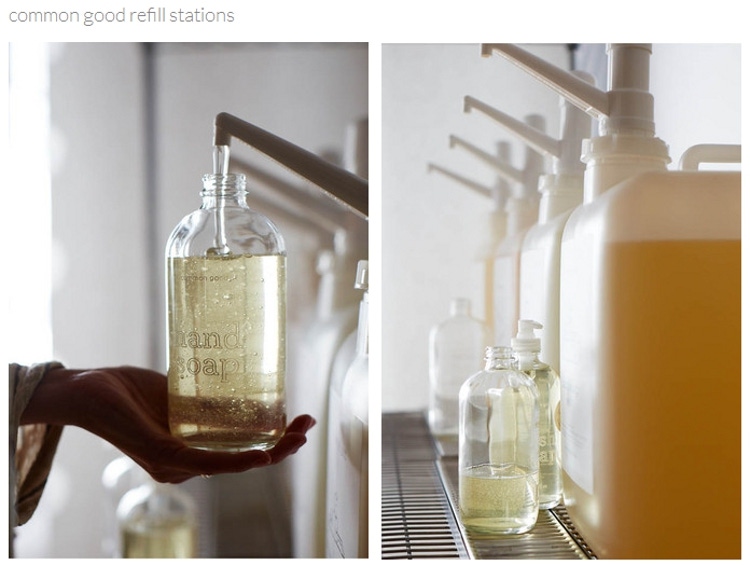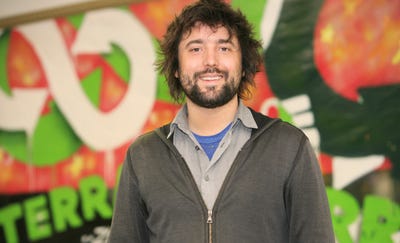January 25, 2018

Sometimes sustainable packaging has less to do with eco-friendly packaging materials and more to do with how we actually distribute product. The bottled water industry, for instances, gets hit with quite a bit of criticism for how much unnecessary bottle waste is generated when most people have access to perfectly clean tap water. However, some communities and several universities have been working toward the elimination of plastic water bottle waste by implementing water refilling stations. There’s no need to buy that water bottle from the vending machine when you can bring an empty bottle and refill it for free. While this is a good step forward, plastic water bottles are only part of the problem.
In general, single-use packaging is now the norm in retail. Everything from water bottles and beverages to personal care, beauty and cleaning products are all packaged in containers and bottles designed to be used once, and then be discarded. Hopefully along the way some of the package is recycled, even though we know recycling can be a challenge for consumers. But what if we took the water refill station idea and applied it to other liquid products?
In the past, beverage companies and other liquid product manufacturers packaged their products in glass, arguably the easiest type of packaging to refill and reuse. There’s a reason you had to put your empty glass milk bottles back on your doorstep for the milkman the next morning! Something durable like a glass bottle is easy to clean, can be continually refilled, and when the time comes (after many uses and refills), it can be responsibly recycled.
There are a variety of different innovative companies that are breaking ground by showing that refill stations can indeed be viable alternatives to packaged products. One of these companies is Green11, a store based in California with three different locations in and around the San Francisco Bay Area. Green11’s stores are called The Refill Place and their motto is “Refill, Not Landfill.” The store offers several different eco-conscious personal care products such as shampoos and body washes, as well as laundry detergent and other house cleaning products. The Refill Place wants to communicate that if more consumers and retail businesses alike move away from individually packaged products in favor of refills, then we can significantly reduce packaging waste.
On the east coast is a New York City-based company called Common Good. Although headquartered in New York, the products are also sold in many other places, even internationally. The company sells reusable glass bottles that you can refill with their eco-friendly products, such as hand soap, dish soap, all-purpose cleaner, and laundry detergent. Depending on the store, you can also use your own containers instead of being shackled to theirs.
Another company attempting to promote and bring awareness to the refill concept is Replenish. What the company realized is that most house cleaners are 90% water, with only 10% containing active cleaning ingredients. In response this, the company partnered with CleanPath to develop a product design that turns disposable cleaning product packaging into a reusable, less wasteful product. How it works: attached to the bottom of the product is a “refill pod” that contains concentrated cleaning agents. All you have to do is squeeze the cleaning agents into the bottle, and add water. There is enough cleaning agent in one pod to make three bottles of product.
While the refill station concept could do significantly reduce packaging waste without compromising the price or quality of liquid products, few consumers have access to retailers or businesses that use refill stations. Buying products in bulk is one viable alternative, limiting necessary packaging while usually providing a greater value to consumers. To help consumers, a woman named Beatrice Johnson developed a smartphone application called Bulk. Consumers can use Bulk to find the nearest bulk food and liquid vendors near them, and they can share newly discovered stores with their friends.
Still, there will not be a refill station or bulk product retailer near everyone. For these consumers, my company’s Zero Waste Boxes can be one viable method to ensure packaging waste does not end up in a landfill. The recycling barrier is almost non-existent, as all that’s required from the consumer is to fill up the box and ship it back to us. There are several box categories to choose from; some are waste stream-specific, and others are for any type of accepted waste with no separation required. When reusing or refilling are not possible options, recycling is the next best way to help manage the waste stream.
Decreasing the amount of waste created by disposable packaging will be a very difficult task, but with the implementation of these different refill processes across the U.S., it may still be possible. This isn’t to say that these methods will mitigate every single piece of packaging waste in existence, but they are certainly steps in the right direction.
Author Tom Szaky, founder and CEO of TerraCycle, has won more than 50 awards for entrepreneurship, also writes blogs for Treehugger and The New York Times, has an upcoming book called "Make Garbage Great" and is the star of a new television show on Pivot TV, “Human Resources” airing in August 2015.
About the Author(s)
You May Also Like




